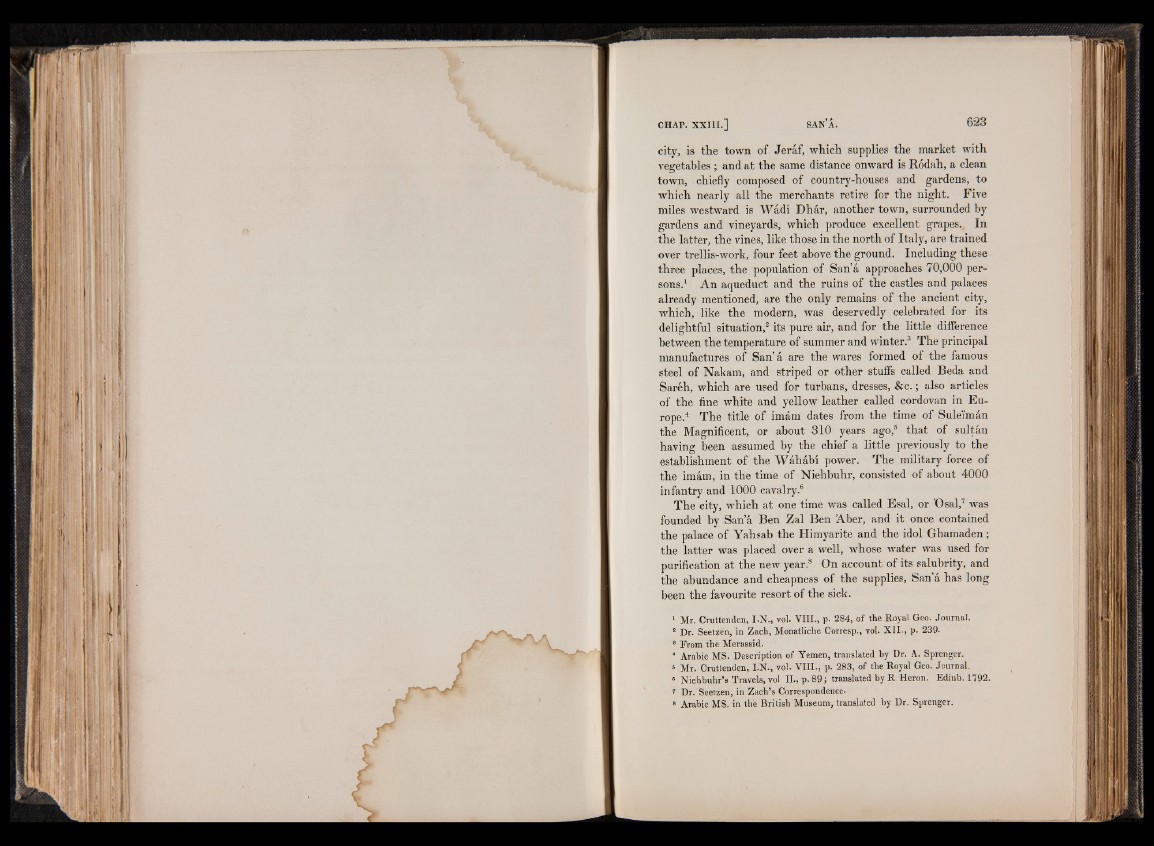
city, is the town of Jeràf, which supplies the market with
vegetables ; and at the same distance onward is Ródah, a clean
town, chiefly composed of country-houses and gardens, to
which nearly all the merchants retire for the night. Five
miles westward is Wàdi Dhàr, another town, surrounded by
gardens and vineyards, which produce excellent grapes.. In
the latter, the vines, like those in the north of Italy, are trained
over trellis-work, four feet above the ground. Including these
three places, the population of Sana approaches 70,000 persons.
1 An aqueduct and the ruins of the castles and palaces
already mentioned, are the only remains of the ancient city,
which, like the modern, was deservedly celebrated for its
delightful situation,2 its pure air, and for the little difference
between the temperature of summer and winter.3 The principal
manufactures of San’a are the wares formed of the famous
steel of Nakam, and striped or other stuffs called Beda and
Saréh, which are used for turbans, dresses, &c. ; also articles
of the fine white and yellow leather called cordovan in Europe.
4 The title of imam dates from the time of Suleiman
the Magnificent, or about 310 years ago,6 that of sultan
having been assumed by the chief a little previously to the
establishment of the Wahabi power. The military force of
the imam, in the time of Niehbuhr, consisted of about 4000
infantry and 1000 cavalry.6
The city, which at one time was called Esal, or ’Osai,7 was
founded by Sana Ben Zal Ben Aber, and it once contained
the palace of Yahsab the Himyarite and the idol Ghamaden ;
the latter was placed over a well, whose water was used for
purification at the new year.8 On account of its salubrity, and
the abundance and cheapness of the supplies, San a has long
been the favourite resort of the sick.
1 Mr. Cruttenden, I.N., vol. VIII., p. 284, of the Royal Geo. Journal.
s Dr. Seetzén, in Zach, Monadiche Corresp., vol. X II., p. 239.
8 From the Merassid.
4 Arabic MS. Description of Yemen, translated by Dr. A. Sprenger.
5 Mr. Cruttenden, I.N., vol. VIII., p. 283, of the Royal Geo. Journal.
6 Niehbuhr’s Travela, voi II., p. 89 ; translated by R Heron. Edinb. 1792.
7 Dr. Seetzen, in Zach’s Correspondence-
8 Arabic MS. in thè British Museum, translated by Dr. Sprenger.